Google Nexus 9: Preliminary Findings
by Joshua Ho on November 3, 2014 1:00 PM ESTGPU Performance
Following along the same lines, we can also take a look at the GPU performance of Tegra13x in the Nexus 9. This really shouldn’t change too much though as the same GPU is used at the same maximum clock speed of 852 MHz. For those that are unfamiliar with the GPU in the Tegra K1, this is effectively a scaled-down version of their desktop Kepler GPUs.

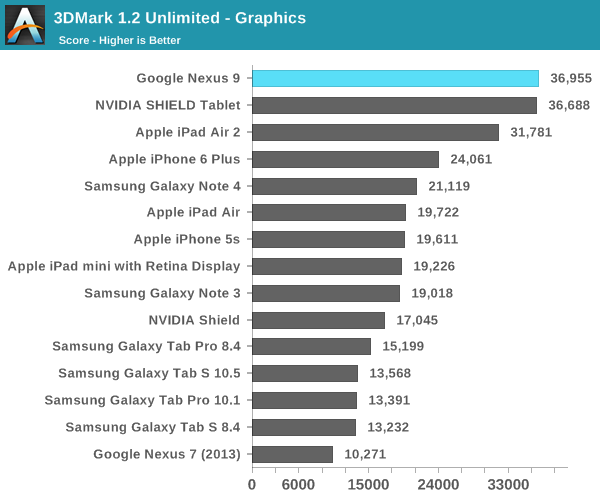
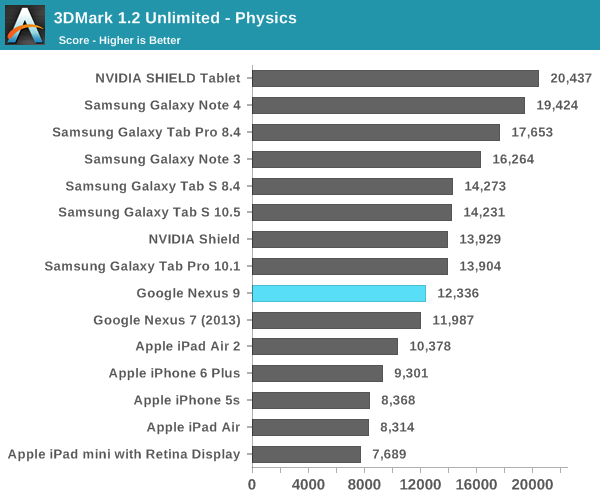
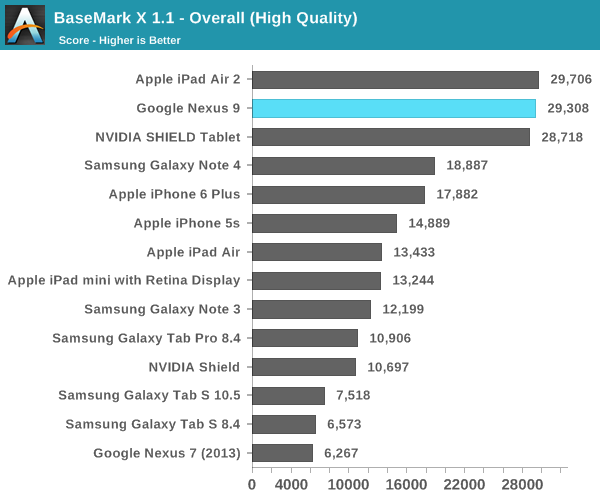
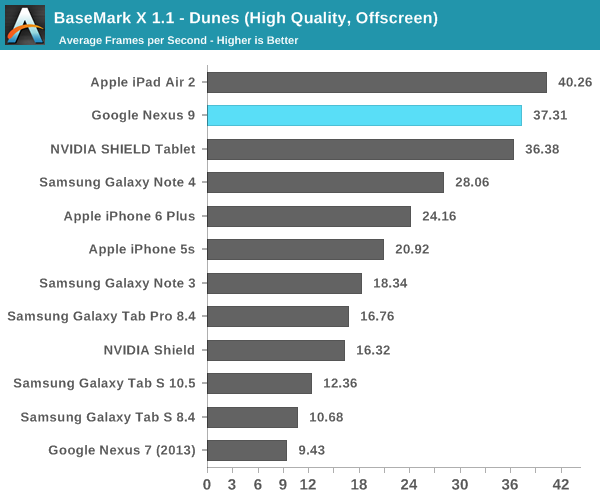
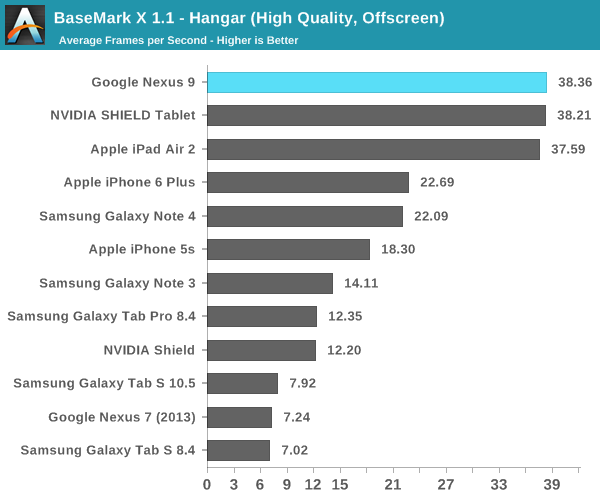
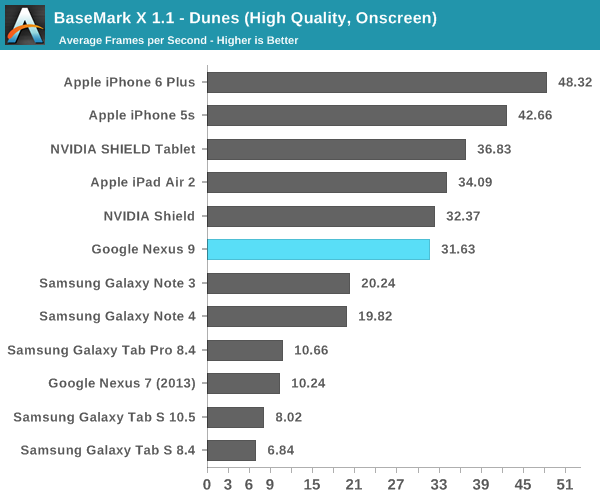

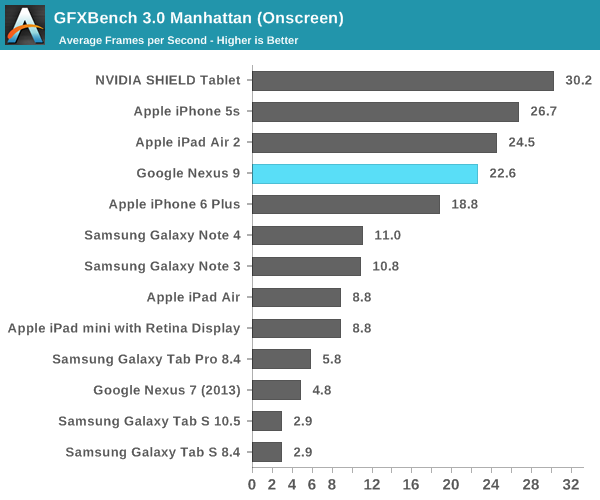
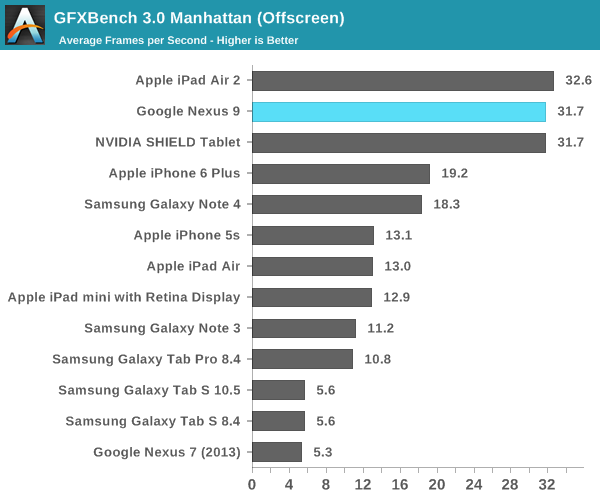
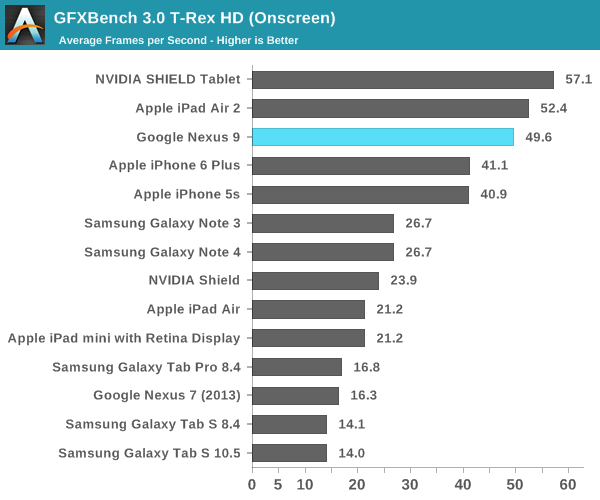
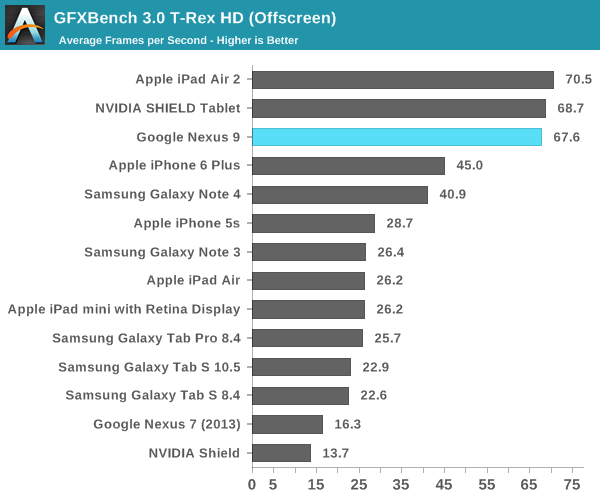
As one can see, the Nexus 9 is effectively equivalent to the SHIELD Tablet in GPU performance. The one anomaly here is 3DMark, which seems to be mostly due to differences in CPU. It's likely that this isn't representative of performance though, as 3DMark's physics test seems to perform better on CPU configurations that rely on larger numbers of cores and higher clock speeds. In the purer GPU tests like Basemark X and GFXBench performance across the board is effectively identical to the Cortex A15 variant of the Tegra K1.
Initial Conclusions
For the most part, the Nexus 9 shows some level of promise as a tablet. While Denver in NVIDIA’s Tegra K1 is a bit bimodal in performance, with sufficient optimization it has immense promise from a sheer performance aspect. While the SoC alone makes the Nexus 9 a fascinating device to look at, the rest of the package has a great deal of potential. The minimalistic design of the device, combined with good material design and stereo front-facing speakers really shows the high-end aspirations of this tablet. While we haven't received anything in the way of accessories, the keyboard folio case seems to be a way of pushing the tablet formfactor in a new direction. This is especially evident when seeing the focus on previous Nexus tablets which seemed to assume touch-only input.
While only a first look, there’s definitely a lot to be impressed by here. However, it will take a full review to really determine whether the Nexus 9 can compete with the iPad Air 2 as a tablet is more than just a function of battery life and SoC performance. In addition, it's hard to draw any real conclusions about this tablet quite yet as the software we received in no way represents a shipping build. Even if inactive, loggers and debug tools generally reduce performance, and it's likely that a great deal of optimization has occurred in the two months since this software build was completed. Once again, we haven't been able to get a newer build, but the full review should be done with shipping firmware.










146 Comments
View All Comments
kron123456789 - Tuesday, November 4, 2014 - link
It's not about power, it's about how you can use that power. On Windows there are many ways to use power of any Core chip, on iOS there is pretty much no way you can use power of A8X.DERSS - Wednesday, November 5, 2014 - link
Easy; Apple has shown heavy load iPad Air 2 applications during presentation.kron123456789 - Wednesday, November 5, 2014 - link
Yup. It's like...two of them, yeah? That's definitely makes a difference.ins1dious - Wednesday, November 5, 2014 - link
Have to start somewhere... I was more impressed with the pixelmator demohttps://www.youtube.com/watch?v=sBfvJn-fpnc#t=3138
I think these ARM chips will start to become more useful once more and more developers take advantage of their power.
DERSS - Thursday, November 6, 2014 - link
@kron, you wrote "But pretty much no way you can use power of A8X", which directly wrong. By now there are already few dozens of heavy load apps that load things (many graphics-related, medical processing pro apps, and so on).kron123456789 - Thursday, November 6, 2014 - link
I bet those apps are working well with A7 chip. Correct me if i'm wrong.ins1dious - Thursday, November 6, 2014 - link
@kron - but with Pixelmator as example... you see 2x performance. Isn't that good?testbug00 - Tuesday, November 4, 2014 - link
The Tegra chip should be some where around equal on Integer and about a half(!) the FP performance of the A8X.retrospooty - Monday, November 3, 2014 - link
"Overall this device I think missed on the lack of expandable storage and low entry level 16GB storage. "Yup. This one boggles the mind. They did 32gb on the Nexus 6. WTF is with 16gb as a start point for a high end tablet? Other than that, its a pretty darn good tablet though. Amazing GPU.
tipoo - Monday, November 3, 2014 - link
Denver looks like some good design choices. 2 big cores are better than 4 scrawny ones, glad to see Android SoC makers learn that, ironically it's the same one that sent everyone chasing 4 cores. The VLIW+Code morphing architecture is interesting, in thoery it would take a hit from spaghetti code, but with 128MB of far caching it shouldn't really run into situations where it's reoptimizing the same code a lot.